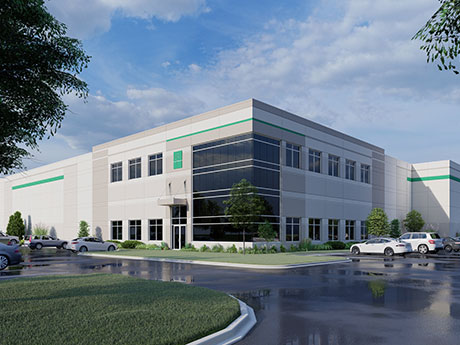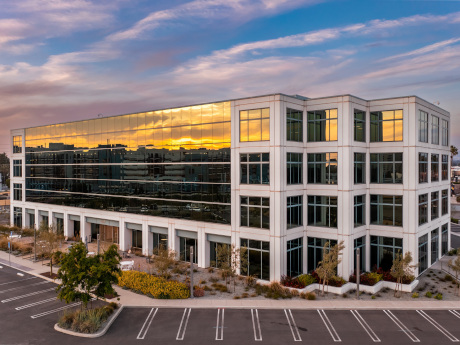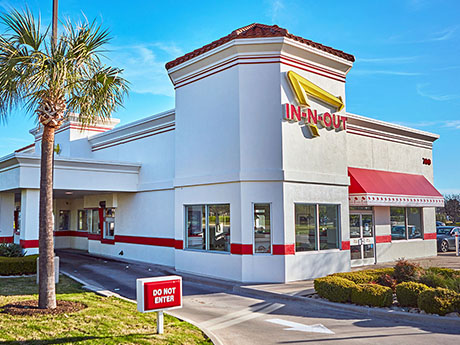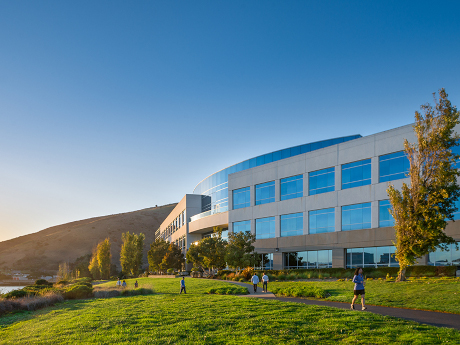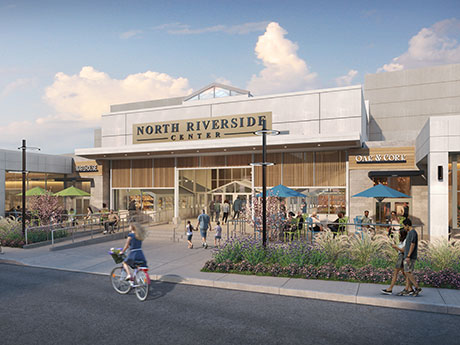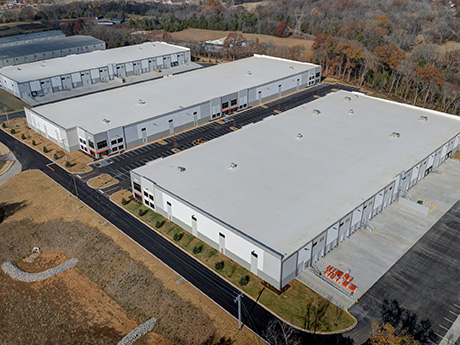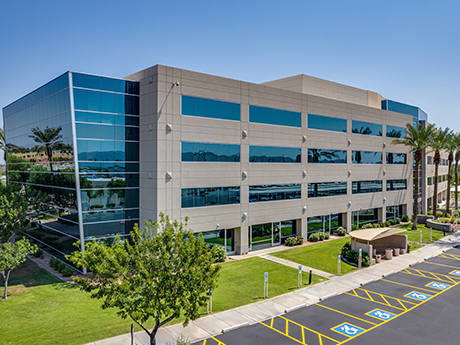The South Coast Metro area — consisting of north Costa Mesa and south Santa Ana — has been a hotbed of activity lately. Toyo Tire Holdings of Americas (TTHA) leased 60,000 square feet in the Harbor Gateway Business Center in early January. The Gateway is situated at the northwest corner of Harbor Boulevard and Sunflower Avenue near freeways, major thoroughfares, apartment communities, shopping, dining and entertainment. In addition to that, the 2,500-acre, 3.5-square-mile Metro area is home to a Theater & Arts District that boasts performance venues like the Renée and Henry Segerstrom Concert Hall and the Tony Award-winning South Coast Repertory. It also has South Coast Plaza, a retail mecca that includes 280 boutiques and restaurants, with an additional 100 restaurants situated within about a one-mile radius of the shopping center. This activity has not only benefitted the nearby businesses, residents and visitors, but the South Coast Metro Alliance as well. The non-profit corporation of property owners and major businesses added three new corporate partners last year, including Related California, Travel Santa Ana and Breeze IT. Related California is the West Coast affiliate of Related Companies, a fully integrated real estate firm that develops multifamily residential and mixed-use properties …
Market Reports
By Noel Liston, Core Industrial Realty The 10 major submarkets that comprise the broader Chicagoland industrial market all performed at or above expectations in 2023. While absorption was not as robust as the pandemic boom that saw back-to-back record years, 2023 was a solid year for absorption and a strong year in rental growth throughout the broader market. Significant deliveries of speculative developments were offset with solid absorption by manufacturing, assembly and food & beverage-related industries that picked up the slack left from a less enthusiastic e-commerce market. Broadly speaking, the greater Chicagoland industrial market started 2024 with a vacancy rate of ±7.3 percent. This vacancy rate is up from the low 5 percent range the market averaged for the second half of 2023. Assuming equilibrium (a market that favors neither tenant nor landlord) for the market is historically a ±6 percent vacancy rate, the current vacancy rate can be deceiving. This is, in large part, due to the jump in vacancy as a result of the delivery of a significant amount of larger, speculative industrial developments in certain submarkets where land zoned for industrial with relatively good access to a major highway or interstate was still available. Further, …
— By Mike Adams, managing director, office investor services, Stream Realty Partners — The Orange County office market, like many others, is undergoing significant shifts as tenants reassess their office space needs in the wake of the ongoing transition to hybrid work models. Despite persisting challenges, recent developments suggest certain market segments are showing signs of recovery. This, naturally, sparks optimism that the worst of the downturn could be behind us. A key indicator of this positive shift is the noteworthy net absorption of 231,744 square feet, marking the first positive trend since the second quarter of 2022. Orange County’s Airport area has emerged as a leader in this office recovery, witnessing move-ins totaling 204,376 square feet. While the overall market grapples with challenges, such as a slight increase in the unemployment rate and mixed performance in office-using sector jobs, there are pockets of improvement, especially in the Class A segment. This positive absorption has contributed to a 10-basis-point decline in the total vacancy rate quarter over quarter, dropping from 18.7 percent to 18.6 percent. However, when viewed year over year, the increase from 16.4 percent highlights the enduring impact of recent economic challenges. The current vacancy rate remains notably …
Nashville Attracts Big Brands Like In-N-Out While Carving Out Distinct Pocket Neighborhoods
by John Nelson
By Katie Lester of Colliers Nashville’s economy experienced some of the healthiest growth in the nation in 2023, with a job growth rate of 3.7 percent, putting it among the top five of the largest 50 metros. Forecasted by Oxford Economics, overall jobs are projected to grow 1.2 percent in 2024 and by 0.8 percent per year in 2025 through 2028, outpacing the U.S. average of 0.5 percent. Nashville also received high marks from the Urban Land Institute, ranking the “No. 1 Market to Watch” in its 2024 Emerging Trends in Real Estate report. This is the third consecutive year that Nashville has earned the top spot in this ranking, a true nod to the confidence and strength of Nashville’s commercial real estate market. The report credits Nashville and other “Supernova” cities as having above-average levels of economic diversity and high-wage jobs that attract investors’ appeal and confidence in sustaining high growth in the coming years. These fundamentals have been a boon to the retail market and have helped attract new-to-market retail brands to Middle Tennessee. Most notably, after a multi-city, multi-state search over the course of two years, In-N-Out Burger picked Middle Tennessee to locate its Eastern Operations Hub, …
— By Alex Browne, life sciences research director, Transwestern Real Estate Service — The San Francisco Bay Area life sciences market has been resilient in the face of the economic headwinds of the past 18 months. Despite the mix of issues besetting other commercial real estate asset classes, life sciences assets have fared well, with quality science continuing to thrive. Any shifts within the life sciences sector have been among the landlords and tenants, as the change in deal influence has varied over the past 12 months. Starting in 2017, the bulk of the deal leverage was on the landlord’s side. This, in turn, sparked an appetite for new development looking to meet the increased demand. It wasn’t until 2022 that the tide began to turn, with tenants gaining more leverage in negotiating renewals or electing to search for more favorable, high-quality space. Even though the market’s activity tends to be overshadowed by industry headlines, deals are being done, and space is being delivered and absorbed — albeit at a slower pace. The Bay Area continues to be the second-largest life sciences hub in the nation, with healthy industry drivers that continue to fuel innovation. The region is home to …
By Brad Belden, Colliers Now that the final numbers are in for 2023, we can undoubtedly say that the worst of COVID is behind us in the world of retail leasing. 2023 saw increased rental rates, longer-term deals and record low vacancy rates across the nation. It’s great news; retail is not dead and it could even be argued that it’s never been busier. But it’s also… different. On average, leases are shrinking and how space is used is changing. And demand, coupled with customers’ increased desire to visit evolving concepts, is making for another busy year ahead for this segment of the industry. So far, 2024 is off to a great start and this year’s trends are already taking form. On the consumer side, a significant shift back to bricks-and-mortar retail is already underway as consumers seek to connect with retailers again and make shopping an “experience.” On the retailer side, two factors are driving change: the emergence of AI, which is allowing many retailers to analyze and customize the customer experience while improving operations behind the scenes to boost sales (regardless of the tenant type, retail tenants in Chicago and across the U.S. have one thing in common: …
By Jack Armstrong and Joanna Paszek of CBRE The Nashville industrial market remained strong through 2023 despite macroeconomic pressures, fueled by persistent occupier demand and limited availabilities. Occupiers were active in the market with mostly sub-100,000-square-foot requirements, making it vital for owners and developers to consider size segment trends and supply the market based on varying occupier needs. The logistical advantage of Nashville’s geographic location continues to attract occupiers and investors to the market. Three major interstates intersect through the city, and companies can reach 72 percent of the U.S. population within two-day ground delivery. A consistent average of 100 new residents daily and waves of new-to-market companies helped promote a swift post-pandemic economic recovery and illustrate the market’s resilience. An increased presence of electric vehicle (EV) companies is paving the way for significant infrastructure upgrades, bringing high-paying jobs and growing supply-chain demand to support their product distribution. Economic incentives like Tennessee’s FastTrack Program grants for job training and infrastructure development, job tax credits and sales tax exemptions have attracted roughly 2,500 jobs and $2.8 billion of capital investment by EV-related operations to Middle Tennessee since 2020. Together, Nashville’s pro-business environment and status as a place people want to live …
— By Kyle Seeger, Vice President, JLL — Like office markets across the U.S., Phoenix continues to navigate its post-pandemic “normal.” But with red-hot population growth, a comparatively low cost of doing business, a dynamic office inventory and a stellar quality of life, it also remains a prime contender for new office locations, relocations and expansions. Metro Phoenix’s overall office vacancy rate had ticked up slightly to 25.6 percent at the close of 2023. Average annual rent growth had decelerated moderately to 0.8 percent year over year, but remained positive. The overall direct asking rent had stabilized at just over $29 per square foot. Although negative absorption remained markedly high at more than 3.5 million square feet through 2023, there was less quarterly loss in the fourth quarter compared to the third quarter. Amid all of this, Phoenix’s cost and demographic advantages — along with its ample inventory — pushed leasing momentum forward. In some cases, it even created positive net absorption, such as in prime office corridors and in newer, highly amenitized Class A projects. The Grove, a 180,000-square-foot, Class AA office building in the Camelback Corridor, is a prime example of this. Within 16 months of its mid-2021 …
By Louis Suarez, Misty Bowe and Brian Bruggeman, Colliers The Twin Cities medical real estate market has experienced many different phases over the last few years, reflecting the region’s journey toward post-pandemic recovery. Currently, this sector is experiencing a notable shift that is fueled by rising vacancy rates for on-campus hospital properties contrasted with a low vacancy rate of 4.9 percent for off-campus medical buildings. This shift is significantly influenced by the push to outpatient surgery centers, ongoing financial pressures and consolidation trends. Additionally, experts in this region are predicting a scarcity of new medical building supply in 2024, which is expected to exert ongoing pressure on rental rates for existing medical office space, despite the stabilization of interest rates that is anticipated to come later this year. As of the fourth quarter of 2023, the current construction pipeline consists of a mere 84,000 square feet, all of which is spoken for with no additional supply projected to come to market in the next year, which is a nearly 80 percent decrease year-over-year. The dramatic increase in interest rates, rising construction costs and capital constraints have pushed asking rents for new proposed projects to well above $30 per square foot …
— By Zach Middleton, senior associate, The Klabin Company/ CORFAC International — Last year brought significant change to the industrial sector across the country. Orange County was not immune to general market factors that were influenced by a sharp rise in interest rates, growing vacancy rates, shallowing tenant demand and increased supply. Fortunately, Orange County remains resilient heading into 2024 due to its prominent geography harbored by major distribution routes along the 5 and 91 freeways, as well as the county’s proximity to the ports. Orange County also proudly showcases one of Southern California’s most diverse tenant pools. This is spearheaded by key sectors like technology and innovation, research, healthcare and biotechnology, manufacturing and aerospace, consumer goods, ecommerce, wholesale and distribution, underscoring its economic versatility and potential for sustained growth. Market breakdown: vacancy rate uptick still below historical average Current vacancy rates across Orange County are as follows: • North County – 2.4% • West County – 4% • South County – 3.5% • Airport – 2.5% Vacancy rates have trended upward but remain below the historical average of 4 percent. A growing number of cheaper sublease options and the slight uptick in vacancy rates have influenced direct deal …



